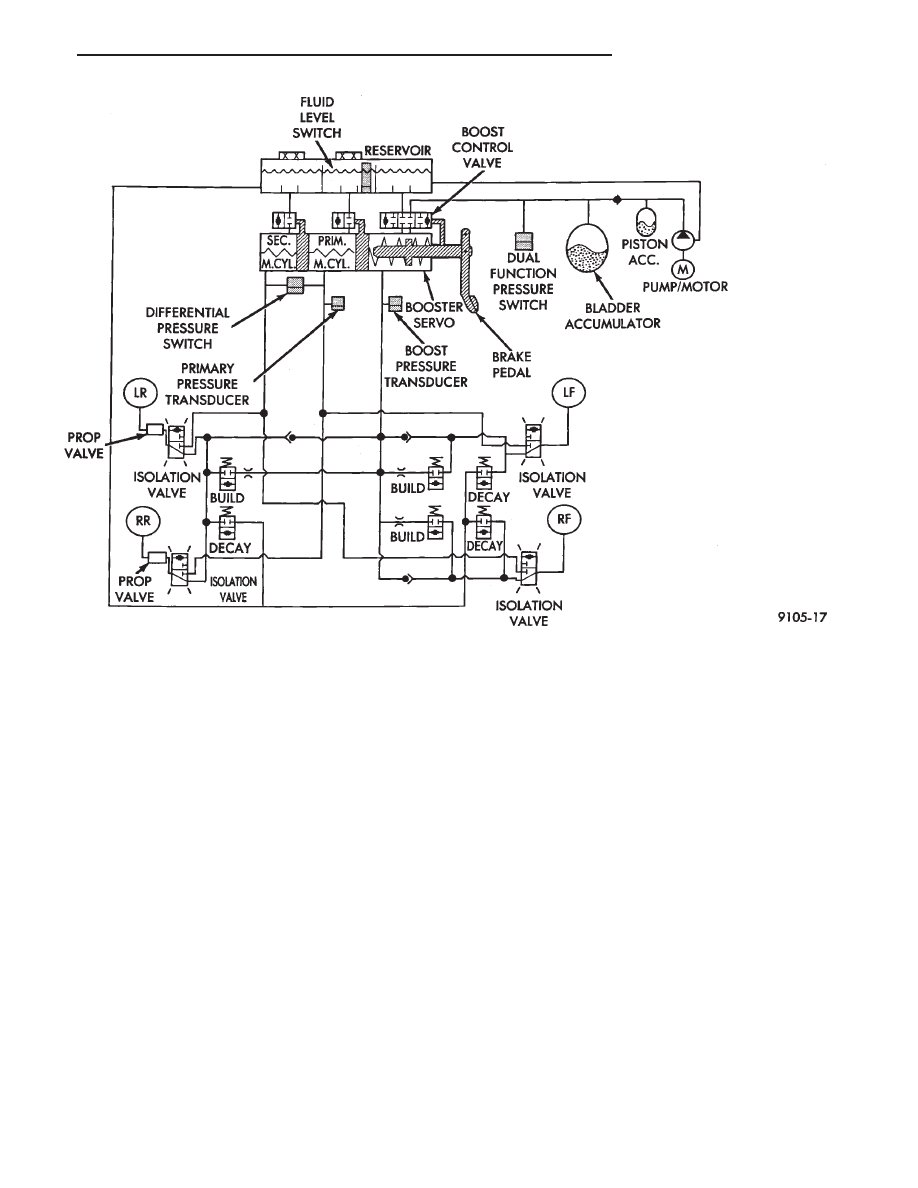Chrysler Town & Country/Voyager, Dodge Caravan, Plymouth Voyager. Manual - part 172

ABS BRAKING SYSTEM DIAGNOSIS
WARNING: SOME OPERATIONS IN THIS SECTION
REQUIRE THAT HYDRAULIC TUBES, HOSES AND
FITTINGS BE DISCONNECTED FOR INSPECTION OR
TESTING PURPOSES. THIS BRAKE SYSTEM USES A
HYDRAULIC ACCUMULATOR THAT, WHEN FULLY
CHARGED, CONTAINS BRAKE FLUID AT HIGH PRES-
SURE. BEFORE DISCONNECTING ANY HYDRAULIC
TUBE, HOSE OR FITTING. BE SURE THAT THE AC-
CUMULATOR IS FULLY DE-PRESSURIZED AS DE-
SCRIBED IN THIS SECTION. FAILURE TO DE-
PRESSURIZE THE ACCUMULATOR MAY RESULT IN
PERSONAL INJURY AND/OR DAMAGE TO PAINTED
SURFACES.
CAUTION: Certain components of the Anti-Lock
Brake System (ABS) are not intended to be serviced
individually. Attempting to remove or disconnect cer-
tain system components, may result in personal
injury and/or improper system operation. Only those
components with approved removal, service and in-
stallation procedures described in this manual
should be serviced.
GENERAL INFORMATION
This section contains information necessary for diag-
nosis of mechanical conditions that can affect the
operation of the Bendix Anti- Lock 10 Brake System.
Specifically, this section should be used to help diag-
nose mechanical conditions that result in any of the
following:
CAUTION: Review this entire section before perform-
ing any mechanical work on a vehicle equipped with
the Bendix Anti-Lock 10 brake system. For informa-
tion on precautions pertaining to potential compo-
nent damage, vehicle damage and personal injury.
(1) Anti-Lock warning lamp illuminated
(2) BRAKE warning lamp on
(3) Lack of Power Assist or Excessive Pedal Travel
(4) Brakes Lock on Hard Application
Diagnosis of conditions that are obviously mechani-
cal in nature. Such as brake noise, brake pulsation, or
vehicle vibration during normal braking. Should be
directed to Group 5 Brakes in the service manual. This
also pertains to problems involving the parking brake
system.
Fig. 12 Hold Pressure - Hydraulic Control
.
ANTI-LOCK BRAKES
5 - 71